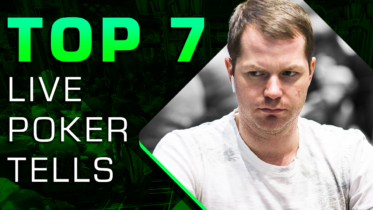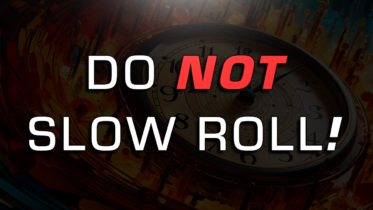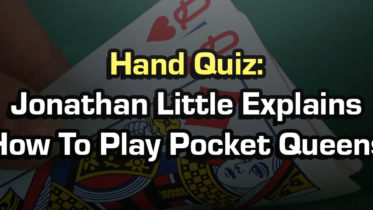Poker has never been harder, but it has also never been easier to find out how to win at the poker table. Although no one can become Phil Hellmuth overnight, a few key adjustments can help turn a losing poker player into a profitable one. PokerCoaching.com is happy to share this list of ten poker tips to help you crush your poker games and start making money playing poker. Ready to take your poker game to the next level? Check out our top ten poker tips below!
- Tip 1: Use the Power of Position in Poker
- Tip 2: Master Preflop Hand Ranges
- Tip 3: Be Willing To Pull The Trigger and Bluff!
- Tip 4: Stop Limping to See Cheap Flops
- Tip 5: Avoid Overplaying Premium Pocket Pairs
- Tip 6: Know When To Walk Away From The Poker Table
- Tip 7: Keep A Proper Bankroll and Track Your Winnings and Losses
- Tip 8: Find A Game You Can Beat and Play As Much As You Can
- Tip 9: Dedicate Time To Study Poker
- Tip 10: Enjoy Yourself At The Poker Table
Tip 1: Use the Power of Position in Poker
It is said that poker is a game where you are tasked with making informative decisions with incomplete information. The best poker players promote finding spots where you play “in position”, as being in position allows you to see what your opponents do before you make a decision. For poker beginners who are new to the game, intentionally seeking out hands in which you will have the advantage of position is a conservative yet optimal strategy when you are first starting out. Especially when on the button, leverage your ability to close the action, control the size of the pot, and witness what your opponents do first to win pots.
Not only should you value position, but you should also recognize which position you happen to be in when determining what hands you play.
Tip 2: Master Preflop Hand Ranges
A major mistake new poker players make is playing the same amount of hands regardless of what position they are in within a poker hand. If you are not familiar with the different terms assigned to each position at the poker table, you can review them via the image below…
Position Names and Abbreviations
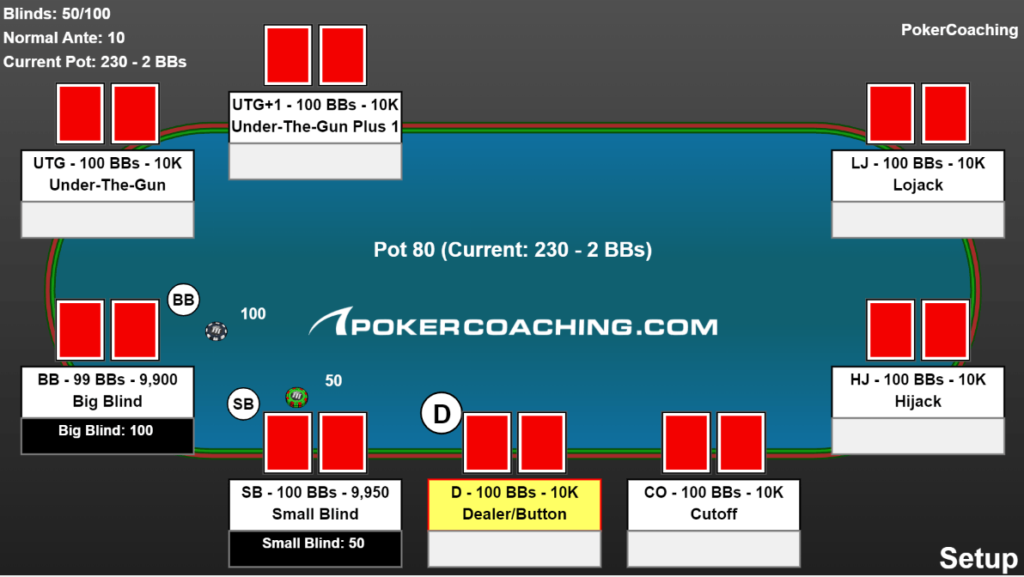
Above you will find the general labels (plus abbreviations) for each player in an 8-handed poker game. For tables/games where it is 9-handed, the additional player that sits between UTG+1 and the Lojack is labeled as UTG+2
Often you will hear/read the eight player positions grouped into the following three sub-categories: early position (EP), middle position (MP), and late position (LP). Within the three positional sub-categories, all UTG positions fall under EP, lojack and hijack fall under MP, with cutoff and button consider LP. Depending on who you are discussing hands with, both the small blind and big blind are grouped in LP, or have their own sub-category.
When deciding what poker hands to play when you are acting preflop in a poker hand, it is critical you note what position you are in when you decide whether or not to bet or fold. Let’s take a look at two examples of optimal preflop hand ranges, one being for UTG and the other being for the button.
Under-The-Gun Raise-First-In Preflop Range (100 Big Blinds)

Raising hands marked in red, folding hands marked in blue. If a hand has both colors, a player mixes between raising and folding to a certain percentage
Button Raise-First-In Range (100 Big Blinds)

Raising hands marked in red, folding hands marked in blue. If a hand has both colors, a player mixes between raising and folding to a certain percentage
Notice how drastically different the opening ranges are for UTG than for the button? Remember: the later you get to act in a poker hand, the bigger advantage you have over the other players. First-to-act preflop, the UTG player is required to act first and does not have any information on their opponents. Due to the disadvantage acting first creates, the UTG player should raise with only the best hands.
Unlike the UTG player, the button gets to act last for almost the entirety of a poker hand, a huge advantage worth utilizing! If everyone folds to the player on the button preflop, they not only get the benefit of position on later betting rounds, but they also only have to worry about two opponents having a better hand than them preflop. With the huge advantage being on the button provides, they get to raise with a wide variety of hands, not just the best ones! Studying proper preflop ranges will give you a huge edge over recreational players, and isn’t hard to implement!
Tip 3: Be Willing To Pull The Trigger and Bluff!
While being dealt good cards will always help you win money at the poker table, you cannot rely on the dealer alone to be successful. Sometimes you will have a great starting hand like A♥K♥, but if the board runs out Q♥-9♥-3♣-7♦-2♠ and you only have ace-high on the river, simply checking it back won’t reward you with the pot. Do you know what might though? Executing a bluff!
Especially at the small stakes, aggressive poker is profitable poker, and poker players do not bluff nearly as much as they should. If the typical player population you face does not bluff, is overly tight, and fails to consider the fact you may be bluffing, you are in a great position to attempt to fool your opponents.
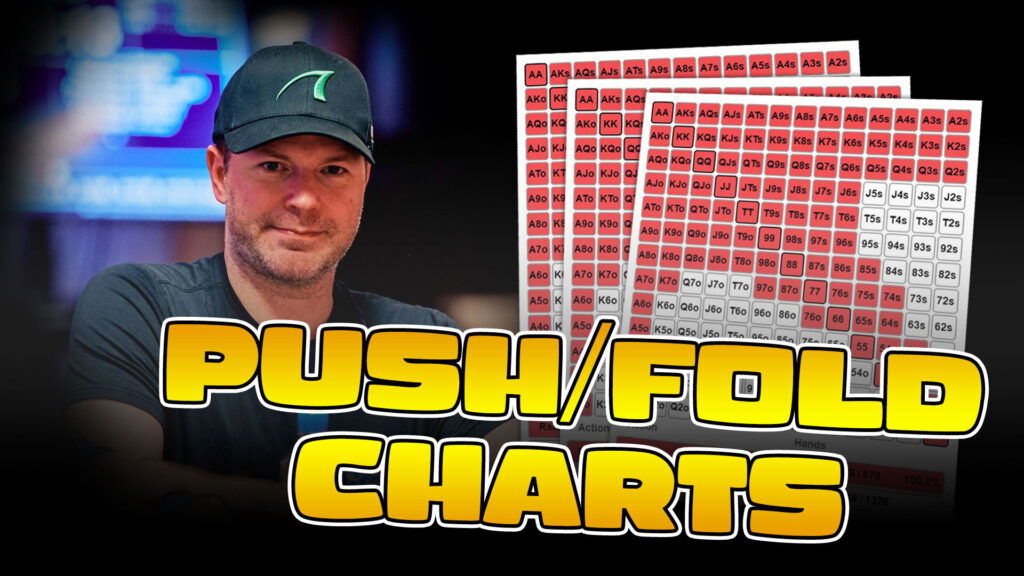
Make the best preflop decisions with Jonathan Little’s Push/Fold Charts!
Tip 4: Stop Limping to See Cheap Flops
Even though it has been proven to be a losing strategy, you will still see a plethora of limping in small stakes cash games and tournaments. Despite the fact that Daniel Negreanu proclaims limpin to be “pimpin”, the act of limping in poker games belongs in the past, along with playing hands like 10-2.
As was previously mentioned in this article, playing aggressively at the small stakes will result in you printing money at the poker table. If you are playing at a $1/$2 cash game table full of passive limpers, you will frequently see spots where you can scoop easy pots.
Say you are in the cutoff, and three players limp in front of you in a $1/$2 cash game. You look down at J♥10♥ and raise it to $15. Having hands they are willing to risk $2 for, but are unwilling to risk $15 for, the passive limpers at your table as well as the players in the blinds fold. By pressuring the limpers with aggression, you successfully won $9 without having to even see the flop (or potentially pay the rake)! If you are able to scoop limped pots preflop just two or three times an hour, you can sustain a profitable hourly rate that will boost your bankroll.
If you are on a cautious side, your first thought when considering raising limpers may be “what if they call?” or “what if they are a tricky limper and limp with pocket aces?” Well, if they call your large raise preflop, often you will have the advantage of playing in position with a profitable hand. If a limper happens to be “tricky”, yes you may lose a bit of money finding this out, but once you gain this information you can adjust and exploit your opponent.
Tip 5: Avoid Overplaying Premium Pocket Pairs
Even the biggest poker newbies don’t need a preflop chart or a poker coach to tell them that they should bet with pocket aces, kings, queens, and pocket jacks. High pocket pairs and suited hands like A-K and A-Q are commonly referred to as premium hands, and they are some of the best starting hands you can have when playing poker. Although premium hands win a high percentage of the time, it is important to recognize when it is in your best interest to fold them. While it may sound crazy, there will be times in your poker career where folding aces is the right play.
Let’s consider an example where you are playing in a $1/$2 cash game:
You are in the hijack, it folds to you preflop and you look down at the beautiful A♣-A♠. With black bullets, you are surely seeing money signs when you raise and both the button and the big blind call!
The flop comes J♥-8♥-8♦, the big blind checks and you bet half pot. Both players call.
The turn is the 7♥, making the board (J♥-8♥-8♦)-7♥. First to act on the turn, the big blind leads out with a two-thirds pot bet. You call with your pocket aces, but then the button decides to move all-in. Even worse, the big blind calls the shove!
Despite the fact you have pocket aces in this spot, take a second to consider how likely it is you have the best hand. There is almost no doubt you had the best hand preflop, but based on the board and your opponent’s play, do you think you’re still ahead? Assessing both opponent’s preflop calling range, neither one of them folding to your flop bet, and the fact they are both willing to move all-in, you must fold your aces despite how much it hurts.
Tip 6: Know When To Walk Away From The Poker Table
Regardless of how long you have been playing the game of poker, every poker player has gone on tilt at some point. Whether you had your aces cracked or you haven’t been dealt a single playable hand over the course of an eight hour session, at some point even the best poker players lose their nerve. You cannot completely prevent having your emotions come into play at the poker table, but what you can do is have a gameplan in place for knowing when to quit.
A smart strategy promoted by PokerCoaching.com coach Evan “Gripsed” Jarvis is making a point to “check in” on yourself at scheduled times throughout a session. If you are grinding cash games, check in on yourself every two hours of playing online and every four hours of playing live. If you are feeling tired, hungry, lonely, and/or angry, you are likely not in a good spot mentally and/or physically to continue playing.
You play your best poker when you are well-fed, well-rested, calm, and collected. Many cash game grinders set a hard “quit time” that they stick to to prevent fatigue and tilt. If you find yourself frequently going on tilt or feeling tired, it may be wise to start establishing times to cash out and stick to them.
Tip 7: Keep A Proper Bankroll and Track Your Winnings and Losses
Many professional poker players attribute their long-term success to proper management of their poker bankroll. For new poker players that are not familiar with the term, a bankroll is essentially a poker player’s “poker money”. Just like how you use a checking account to pay your bills and buy groceries, a poker player uses a bankroll to pay for tournament and cash game buy-ins. If you are a recreational poker player who only plays poker every now and then, it is just fine if you simply withdraw money from the ATM whenever you happen to play. However, if you want to grind poker tournaments and cash games to eventually move up stakes, you must have a bankroll that is completely separate from your usual checking and savings account.

Read one of the highest regarded articles on the PokerCoaching.com blog: The Bankroll Bible
Playing Cash Game and Poker Tournaments That Fit Your Bankroll
You will often hear poker players like myself say “just because a game exists, it doesn’t mean you need to play it!” Appropriately managing a poker bankroll requires you to only play cash games and tournaments that you can afford to play frequently.
When they are just starting out, many small stakes grinders start with a bankroll of around $6,000. If you buy into your $1/$2 cash game for $300 each time, you have a total of 200 buy-ins, more than enough if you are a decent, winning player. If you grind small stakes tournaments with buy-ins that range from $60-$100, $6,000 will afford you enough buy-ins to withstand the high variance of tournaments (again, as long as you are a decent, winning player).
The mistake that a lot of poker players make is playing cash games and tournaments that exceed the mentioned bankroll stipulations. Instead of playing $1/$2, they will hop into the $2/$5 game because they don’t want to wait to play. Or, no tournaments within their usual stakes are available, so they will decide to “take a shot” and hop into a $500 buy-in tournament. Although it is okay to take shots at the higher stakes once and awhile, you must prove yourself at the small stakes first before doing so. If you play higher stakes just because, you will eventually deplete your bankroll and go broke.
Managing your bankroll effectively comes down to simple math. If you have a $6,000 bankroll and insist on playing $500 tournaments, not only are you probably not skilled enough to play at these stakes, but you can only afford to play 12 tournaments. Remember: even the best poker players have downswings. It is not uncommon for winning players to play 20 tournaments and not get a single cash. If you only have 12 buy-ins and aren’t named Phil Ivey, you are not ready to play tournaments at such high stakes.
While it may seem tedious, keeping a proper poker bankroll will allow you to almost always have enough money to play and move-up when you are ready. Keep a watchful eye over your “poker money”, and you will eventually be rewarded for your patience.
Tip 8: Find A Game You Can Beat and Play As Much As You Can
The key to making money by playing poker is finding a game you can beat and playing it as much as you can. Being selective with the cash games and poker tournaments you play and actively seeking out games where you have an edge is referred to as game selection. Game selection, most prominent in cash games, is a major factor in your success as a poker player. While you cannot control the cards you are dealt, you can control the poker games in which you allocate time and money towards. If you are going to invest time and money into something, it makes sense you would invest in a venture that has a high probability of return.
If you are playing cash games and are trying to decide if a game is worth playing, ask yourself the following questions…
– Where do you rank amongst the players at the table?
– How many bad/recreational players are playing?
– Who has a lot of chips? (If the bad players have big stacks, that’s good. If the good players have big stacks, avoid the game).
– Is anyone tilted, drunk, or distracted?
If you assess cash game tables with the above questions and actively pursue games where you have the highest expected value, you will print!
Tip 9: Dedicate Time To Study Poker
It may come as a shock to some, but if you never study at poker you will never become a winning player! What was a winning poker strategy ten years ago will surely lose you money now in the current poker landscape. With it being an ever-evolving game, poker requires you to stay on top of what defines a winning strategy by consistently studying the game. Whether it be reading poker strategy books or being a premium member of PokerCoaching.com, you must allocate time each week to studying poker and not just playing.
Tip 10: Enjoy Yourself At The Poker Table
Every poker player has a different relationship with the game. Some poker players have aspirations of one day going pro, traveling the world as they seek riches and World Series of Poker bracelets. Others simply play poker for the love of the game, and look forward to the possibility of beating their friends in their weekly home game. If you play poker simply because you love to play, the prospect of dedicating hours to studying solvers and preflop ranges is not a necessary one.
The “grind” of poker is often romanticized without noting the negatives it comes with. The mental fortitude and emotional endurance needed to achieve notable success in poker leads many players to experience burnout. Regardless of what your goals are within poker, if the game ever stops being fun to play, take note and consider whether you should take a break or give up the game entirely. Sometimes time away from the game can be exactly what you need to come back refreshed and ready to go on a heater!
Are you a new poker poker looking for even more poker tips?
Be sure to check out Jonathan Little’s 5 Poker Tips For No-Limit Texas Hold’em Beginners

